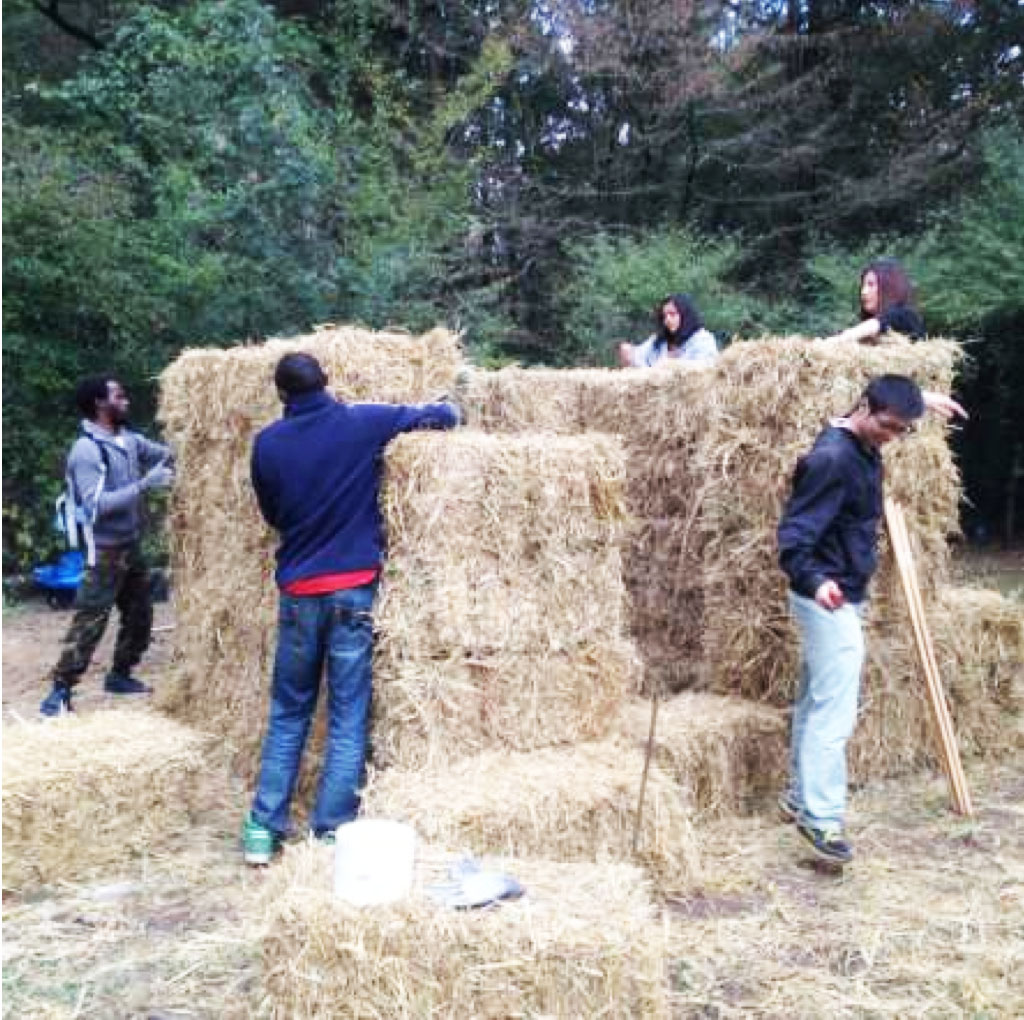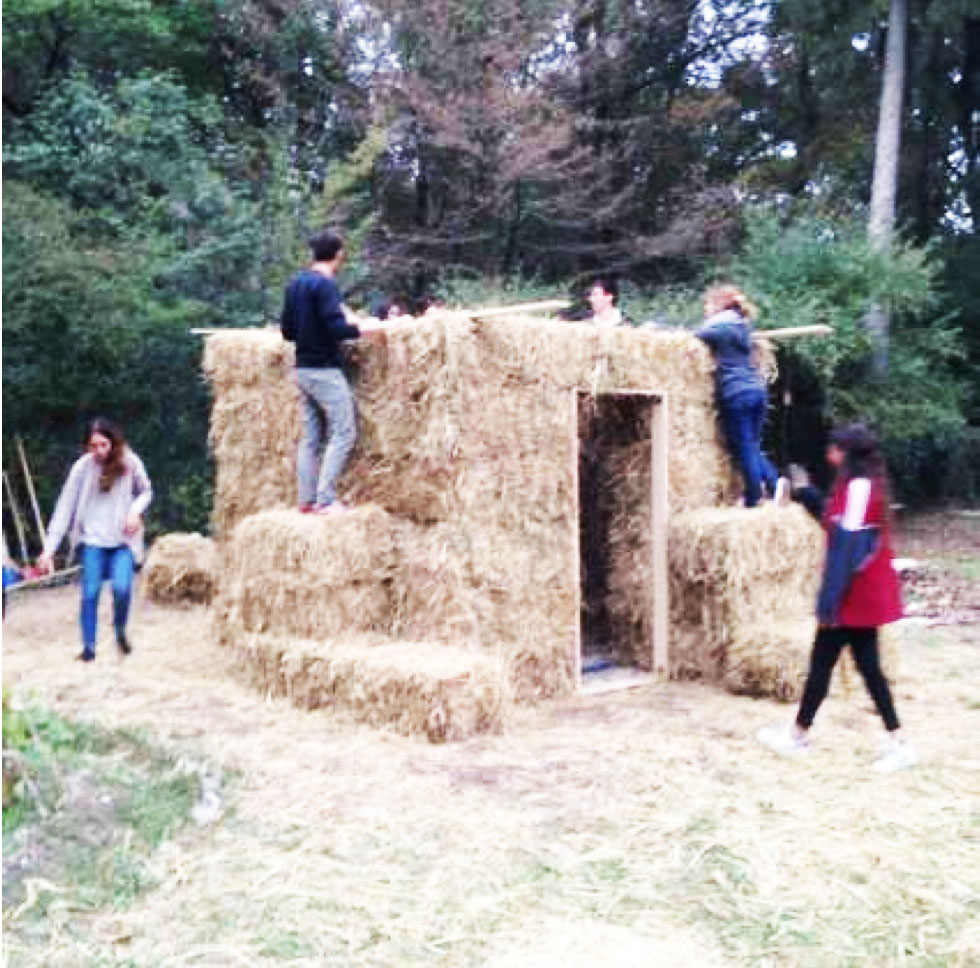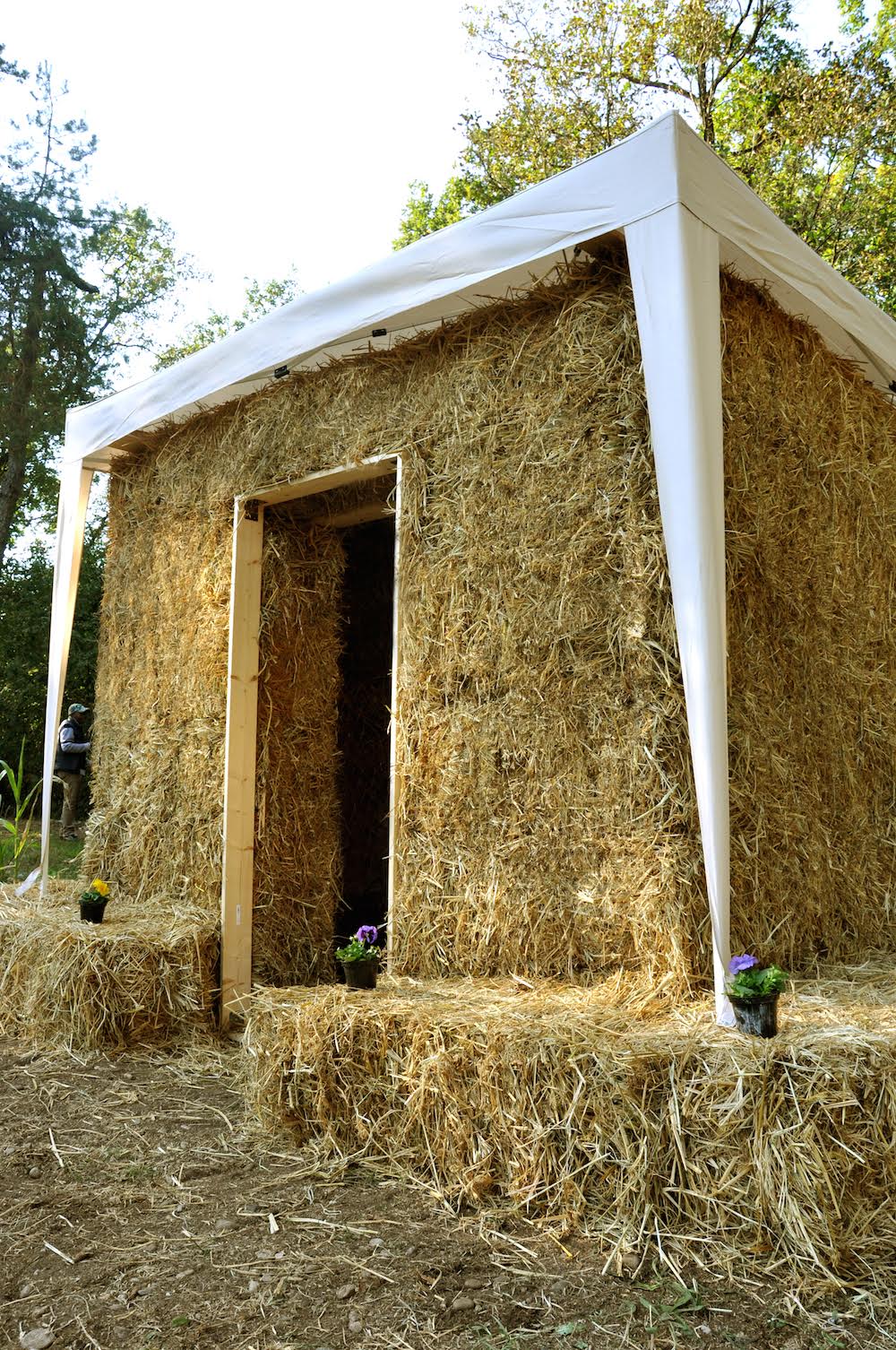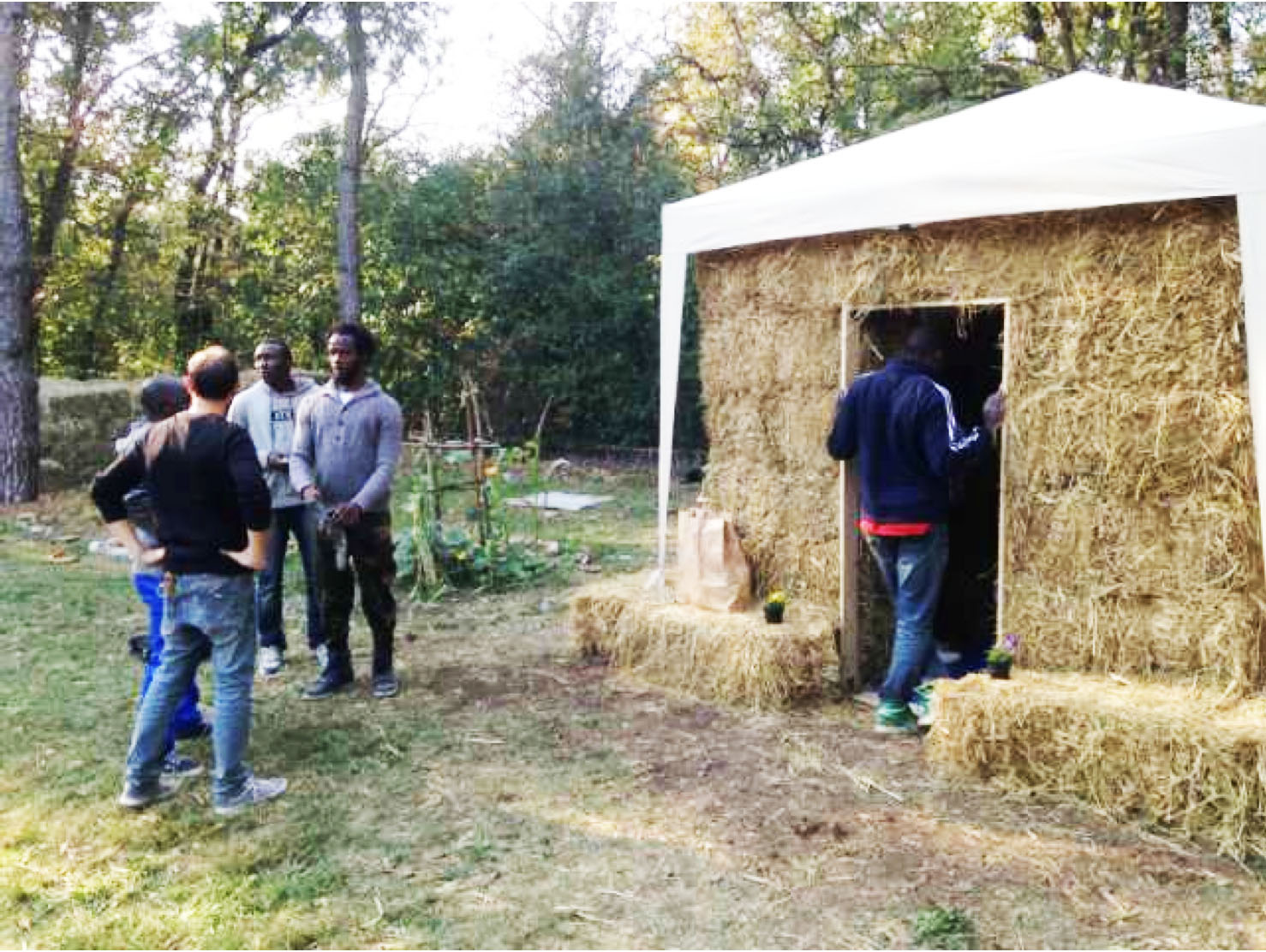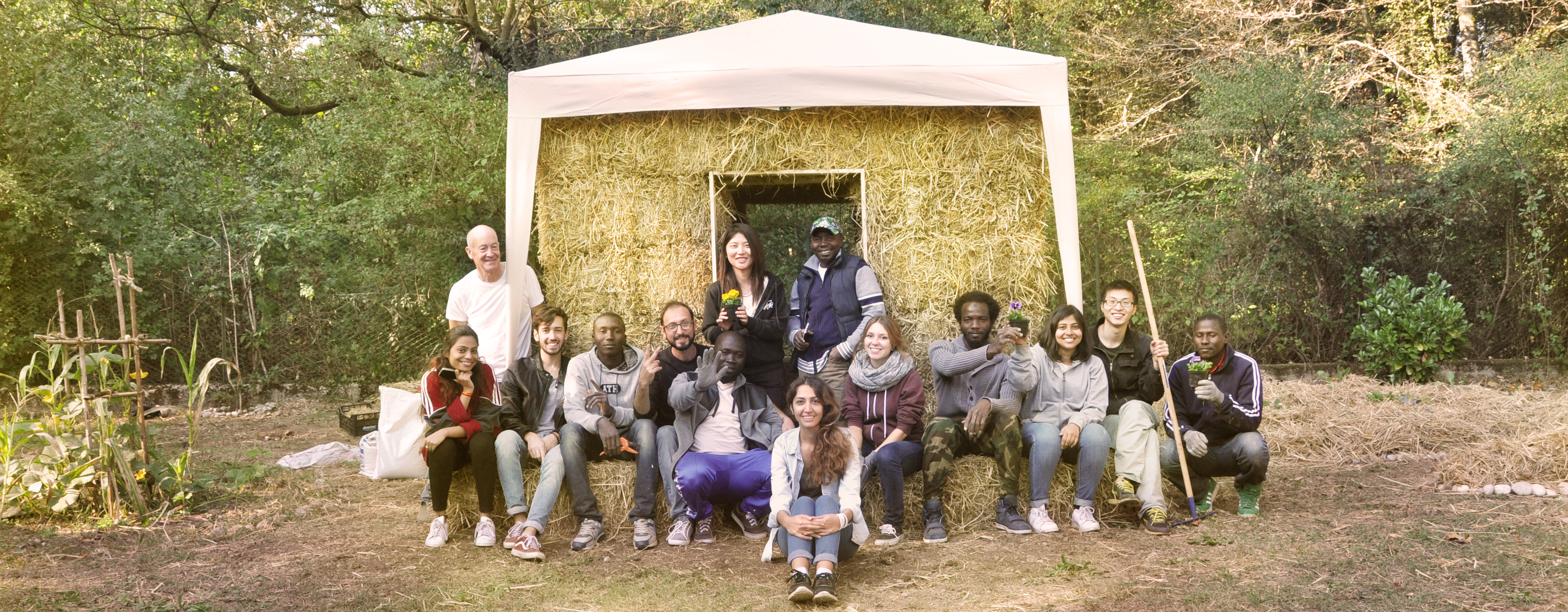AGRIshelter: A biodegradable shelter for refugees | Milan, Italy
A project designed by Narges Mofarahian, an Iranian student of Architecture at Politecnico University, Milan, Italy, which won the international competition "What Design Can Do".
The prototype was built by students and refugees by the Ticino River, a few miles from the city.
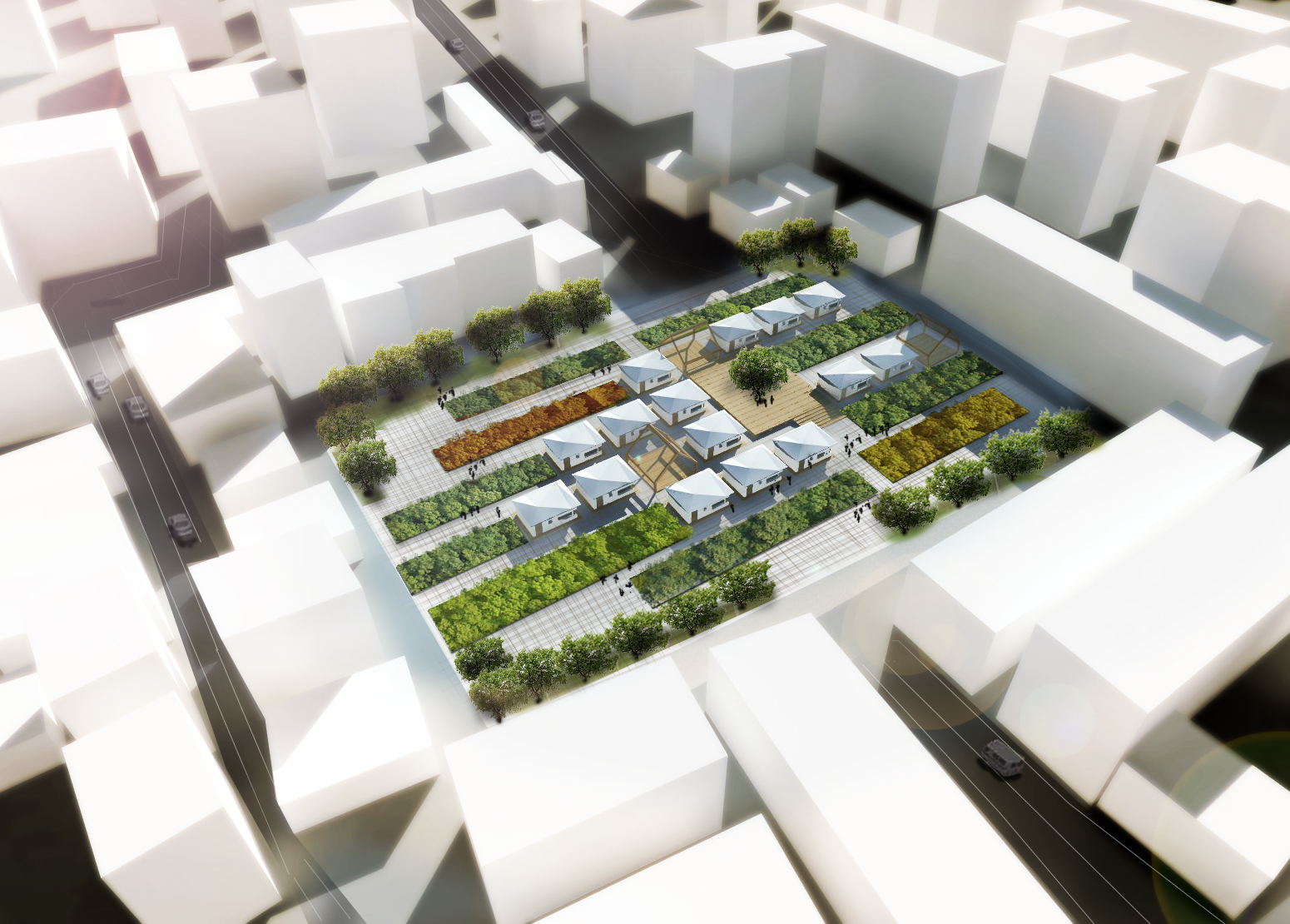 The project for a temporary, biodegradable housing
The project for a temporary, biodegradable housing
“During the Spring and Summer 2016 thousands of refugees arrived each day in European countries. Due to their great number they don’t receive a dignified place to live during the period they are waiting for asylum, and the wait can last for years.
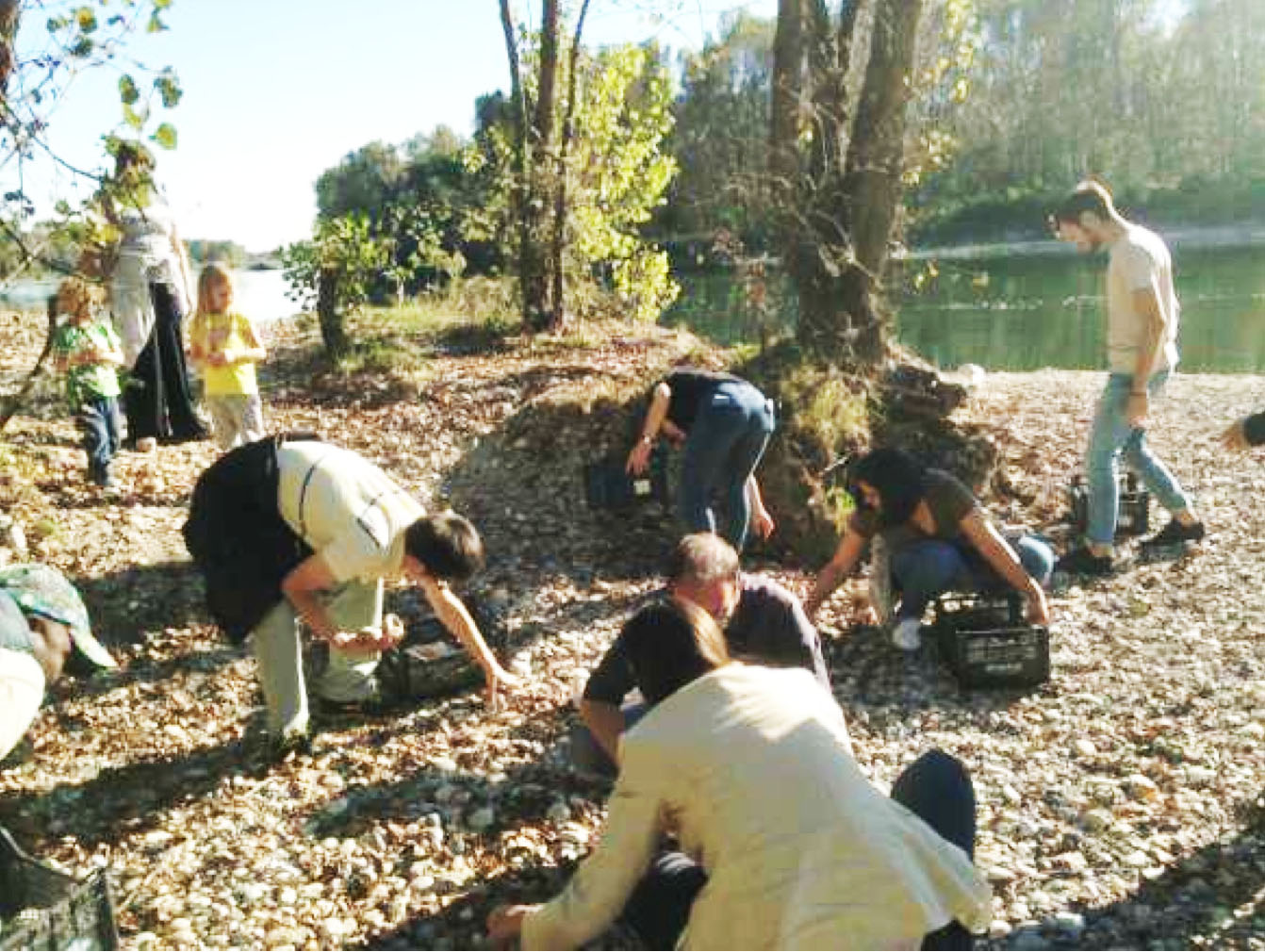 The problem in the reception centers is that they are overcrowded places, with little chance for social integration, no identity, lack of privacy and a feeling of not belonging, all factors which lead to tensions inside the centers and many further negative consequences.
The problem in the reception centers is that they are overcrowded places, with little chance for social integration, no identity, lack of privacy and a feeling of not belonging, all factors which lead to tensions inside the centers and many further negative consequences.
The isolation of the reception centers is another problem that makes integration much harder, and causes great tensions which could end in strong negative reactions from both groups (the refugees and the population of the hosting cities) as a result of ghettoizing one group out of mainstream society.
The ‘Agrishelte’r is a dignified, cheap, biodegradable home, with excellent thermal performance, and it can be built in a short time to last 3-5 years. It also creates integration through the methods of collective construction, gardening and market.
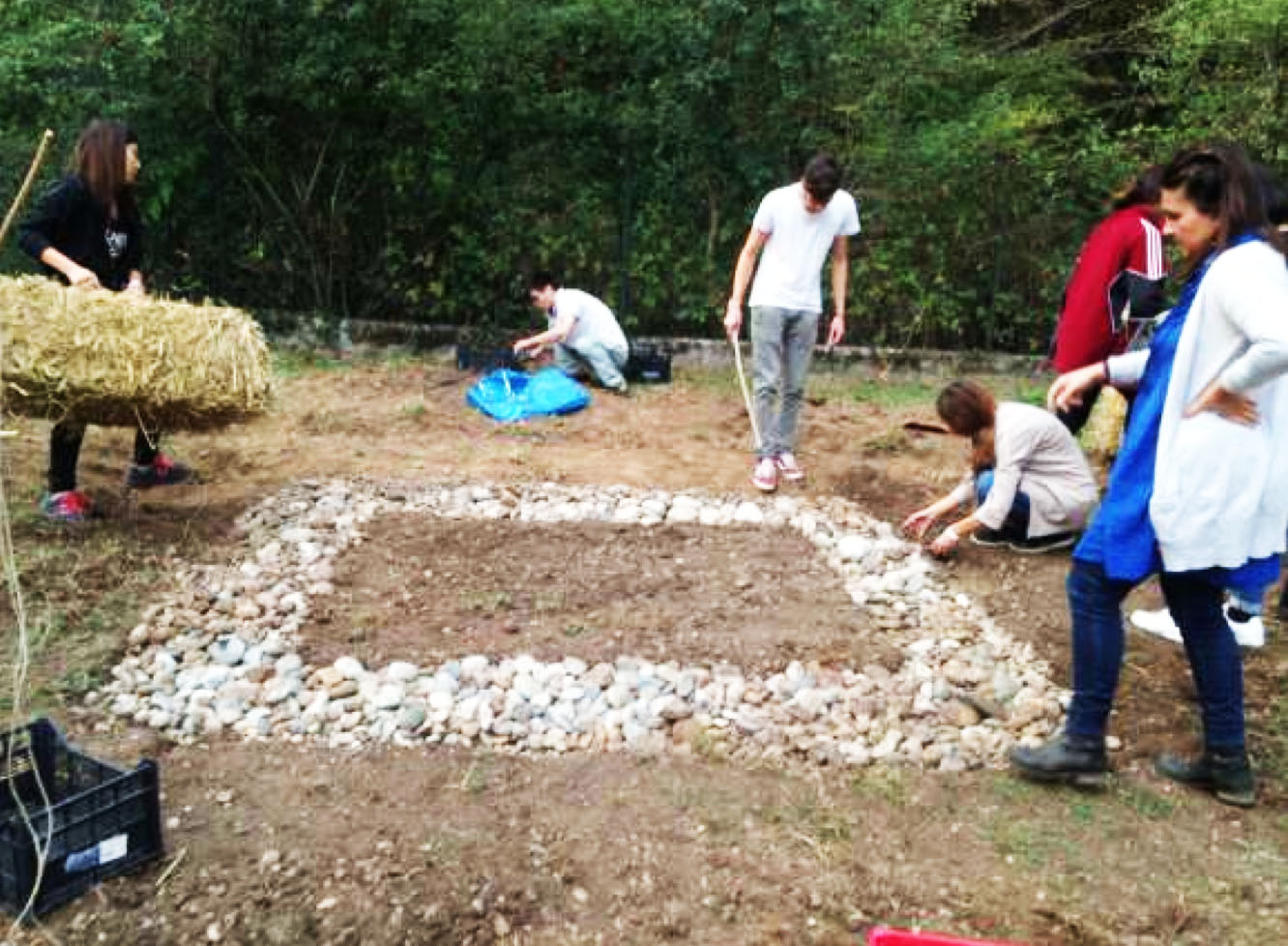 Building the agrishelters inside the hosting cities is another positive aspect, because it prevents the formation of isolated, ghetto like camps. The materials used to build the shelters are all biodegradable, and they can be easily demolished with no negative impact on the land. We believe that this is a very important aspect, that can make a more convincing case when asking the authorities for land inside the city, because that land it will be occupied temporarily.
Building the agrishelters inside the hosting cities is another positive aspect, because it prevents the formation of isolated, ghetto like camps. The materials used to build the shelters are all biodegradable, and they can be easily demolished with no negative impact on the land. We believe that this is a very important aspect, that can make a more convincing case when asking the authorities for land inside the city, because that land it will be occupied temporarily.
My experience in building the first prototype was extremely positive. Beside the technical aspects, which seemed to work well, I witnessed the social interaction between all the team members, students and refugees, while working together, trying to know about each other’s languages and cultures, and just enjoying the collaboration and having a great time. It also seemed very interesting to the participating refugees that the flexibility of the design would allow them to contribute with small interventions and changes in building the shelter according to their tastes.
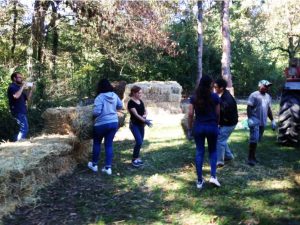 Another great experience was that the people in the neighborhood seemed curious and excited about what we were doing, and even tried to contribute to the project in different ways.” (Narges Mofarahian)
Another great experience was that the people in the neighborhood seemed curious and excited about what we were doing, and even tried to contribute to the project in different ways.” (Narges Mofarahian)
The project won the international competition "What Design Can Do", devoted to the question of refugees and co-sponsored by IKEA and UNHRC (United Nations Human Rights Council).
A small prototype of the shelter (3 by 3 metres, as opposed to the 5 by 7 metres, with kitchen and toilet, of the designed project) was built last October by a group of students of the Politecnico University and a group of refugees. The first real prototype will be built and presented to the public in downtown Milan.
Coordinators: Richard Ingersoll (Politecnico), Elisa Cattaneo (Politecnico) and Davide Biolghini. Assistant: Filippo Cattapan. Students: Wenjun Zeng, Shreyaa Jaya, Giulia Crotti, Nicolò Croce, Thesu v. Gowda, Yuanxiang Chen. Refugees: Espoire, Adamo, Musa, Balu.
